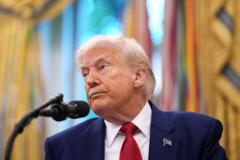The papal conclave has commenced, with cardinals adhering to time-honored traditions and utilizing specific ceremonial objects as they seek a successor to Pope Francis, all done in secrecy.
**Inside the Papal Conclave: The Tradition and Tools of Election**

**Inside the Papal Conclave: The Tradition and Tools of Election**
As the world watches, the process to elect the next pope unfolds amidst ancient customs and distinct voting methods.
In a momentous and deeply traditional event, the conclave to elect the next pope has begun in Vatican City. Gathered in the historic Sistine Chapel, cardinals hold the responsibility of choosing a new pontiff through a secret ballot process, requiring a two-thirds majority for any candidate to assume the title.
Although the discussions remain private and inaccessible to the public, observers can anticipate the significant elements that shape this election. Central to the conclave are various objects that carry extensive symbolism and rules outlined in the Universi Dominici Gregis document, which governs the papal election procedures.
At the heart of the voting process lies the urn designated for ballots, alongside simple yet functional wooden tables where cardinals will sit during the voting. Each cardinal casts their vote on a rectangular ballot inscribed with the phrase “Eligo in Summum Pontificem,” meaning “I elect as Supreme Pontiff.” The ballots, upon completion, are placed carefully in the urn, where they will remain until the counting phase has commenced.
Understanding the need for order and verification, wooden balls are also utilized during the ballot counting. Each ball is inscribed with a number matching the cardinal's vote count. As votes are counted, one wooden ball is removed for every ballot cast, ensuring that no discrepancies arise. If any inconsistency occurs between the number of ballots and the number of participating cardinals, the ballots will be incinerated, and the voting will commence anew.
As the conclave progresses, the eyes of the world remain fixed on this ritual steeped in heritage, awaiting the emergence of the successor to Pope Francis and the new direction he will take for the Catholic Church.
Although the discussions remain private and inaccessible to the public, observers can anticipate the significant elements that shape this election. Central to the conclave are various objects that carry extensive symbolism and rules outlined in the Universi Dominici Gregis document, which governs the papal election procedures.
At the heart of the voting process lies the urn designated for ballots, alongside simple yet functional wooden tables where cardinals will sit during the voting. Each cardinal casts their vote on a rectangular ballot inscribed with the phrase “Eligo in Summum Pontificem,” meaning “I elect as Supreme Pontiff.” The ballots, upon completion, are placed carefully in the urn, where they will remain until the counting phase has commenced.
Understanding the need for order and verification, wooden balls are also utilized during the ballot counting. Each ball is inscribed with a number matching the cardinal's vote count. As votes are counted, one wooden ball is removed for every ballot cast, ensuring that no discrepancies arise. If any inconsistency occurs between the number of ballots and the number of participating cardinals, the ballots will be incinerated, and the voting will commence anew.
As the conclave progresses, the eyes of the world remain fixed on this ritual steeped in heritage, awaiting the emergence of the successor to Pope Francis and the new direction he will take for the Catholic Church.





















